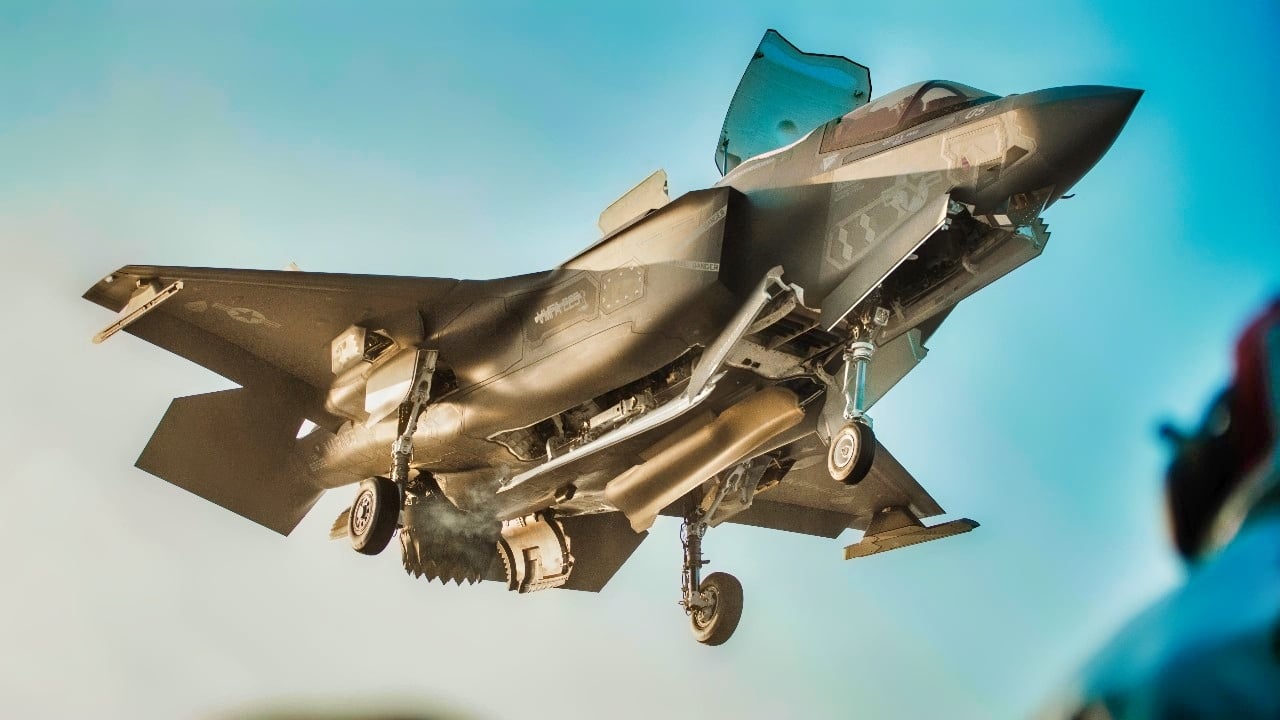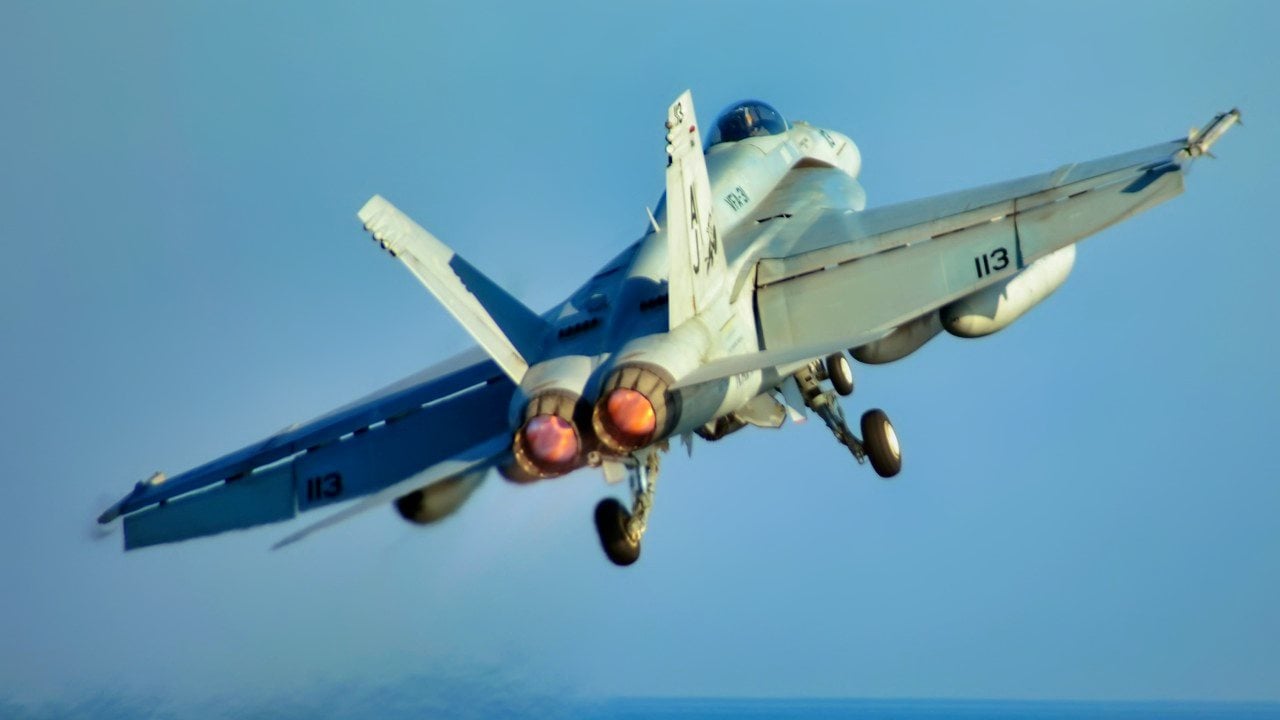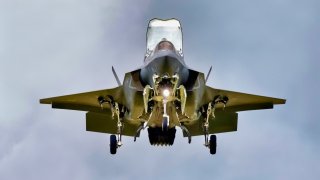Navy F/A-18 Super Hornet Fighters Can 'Refuel' F-35 Fighters
The U.S. Navy’s F/A-18 Super Hornet recently refueled Italian F-35B Lightning II fighters during joint exercises between the USS Abraham Lincoln and the Italian Navy’s ITS Cavour in the Gulf of Aden.
What You Need to Know: The U.S. Navy’s F/A-18 Super Hornet recently refueled Italian F-35B Lightning II fighters during joint exercises between the USS Abraham Lincoln and the Italian Navy’s ITS Cavour in the Gulf of Aden.

-The operation highlighted the Super Hornet’s role as a multirole fighter and aerial refueler, providing fuel to both F-35Bs and AV-8B+ Harriers. Utilizing the "Buddy Store" system, the Super Hornet acted as an airborne refueling station, enhancing the operational range of the Italian jets.
-This capability showcases the aircraft's versatility and the strengthened interoperability between U.S. and Italian naval forces.
The U.S. Navy's F/A-18 Super Hornet Just Refueled Italian F-35 Fighters
Last week, the United States Navy's Nimitz-class nuclear-powered supercarrier USS Abraham Lincoln (CVN-72) conducted joint exercises with the Italian Navy's flagship aircraft carrier ITS Cavour in the Gulf of Aden.
According to an announcement by the U.S. 5th Fleet, the joint operation provided "an opportunity to advance interoperability by carrying out integrated planning and coordination, communications, cross-deck leadership exchanges, a fast-roping exercise, and an air defense exercise to strengthen combined maritime operations and combat readiness."
During the joint operations, a pair of U.S. Navy Boeing F/A-18E Super Hornets acted as a service station in the sky for four Italian Lockheed Martin F-35B Lighting II and four McDonnell Douglas AV-8B+ Harrier II carrier-based fighters. U.S. Central Command (USCENTCOM) shared an image of the F-35Bs, attached to the ITS Cavour Carrier Strike Group, conducting an air-to-air refueling (AAR) with a Super Hornet. The U.S. Navy's carrier-based multirole fighter was attached to Strike Fighter Squadron (VFA) 151 the "Vigilantes."

Buddy-Buddy Refueling
The Boeing F/A-18 Super Hornet has been in service since 1999, replacing the aging F-14 Tomcat, and it remains a key asset for the U.S. Navy. The Super Hornet is an upgraded variant of the original Cold War-era F/A-18 Hornet. The improvement model provided a 20% larger airframe, allowing it to carry an additional 33% more internal fuel, which increased its mission range by 41% while its endurance was also increased by nearly 50%.
Yet, despite being super-sized, the F/A-18E/F actually has 42 percent fewer parts than its predecessor the F/A-18C/D variant.
The Super Hornet has performed as a multirole attack aircraft via the use of different external equipment, while the fighter jet's advanced networking capabilities have allowed it to accomplish very specific missions. In this way, it has been utilized as a "force multiplier" where it has been deployed to meet the various challenges that a carrier might face. In its fighter mode, it has served as an escort and provided fleet air defenses from enemy aircraft and other threats; while in its attack mode, it has provided force projection, interdiction, and close and deep air support.
The F/A-18E/F continues to meet current Navy fighter escort and interdiction mission requirements and has been employed in an increasing range of missions, including Forward Air Controller (Airborne) and Aerial Tanking, as they have proven capability to replace the S-3 as an aerial tanker. That latter capability was not available with the original F/A-18 Hornet.
Instead, the Super Hornet is equipped with an aerial refueling system (ARS) – also known as a "Buddy Store" enabling buddy-buddy refueling. It includes an external 330-gallon (1,200 liter) tank with a hose reel on the centerline. In addition, the aircraft is fitted with four external 480-gallon (1,800 liter) tanks and internal tanks – totaling 29,000 pounds (13,000 kg) of fuel.
That should be more than enough fuel for four thirsty Italian F-35s.
Author Experience and Expertise: Peter Suciu
Peter Suciu is a Michigan-based writer. He has contributed to more than four dozen magazines, newspapers, and websites with over 3,200 published pieces over a twenty-year career in journalism. He regularly writes about military hardware, firearms history, cybersecurity, politics, and international affairs. Peter is also a Contributing Writer for Forbes and Clearance Jobs. You can follow him on Twitter: @PeterSuciu. You can email the author: [email protected].
Image Credit: Creative Commons and/or Shutterstock.


